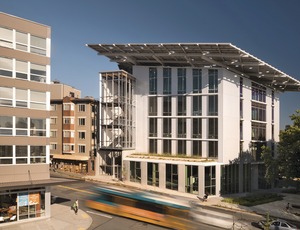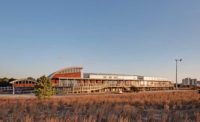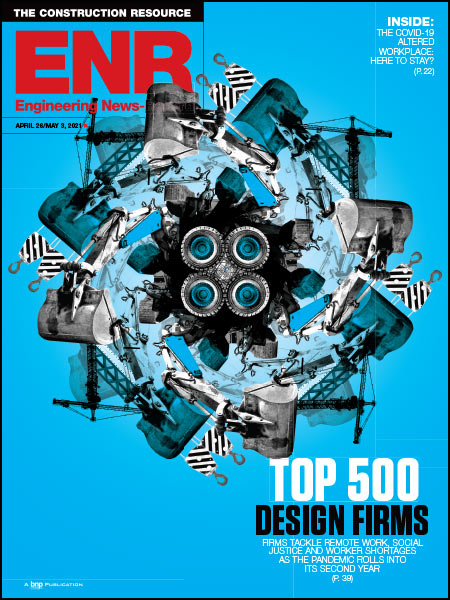

The architect for the world's most sustainable speculative office building—Seattle's 52,000-sq-ft Bullitt Center—says the most challenging aspect of the design was staying within budget while still meeting the Living Building Challenge's rigorous certification requirements. On April 1, nearly two years after it opened, the $32.5-million development became the first office building to be certified by the LBC as a Living Building.
The developer—the nonprofit Bullitt Foundation—wanted a replicable financial model as well as a replicable sustainability model "Not only were we charged with solving all the riddles of a Living Building, we had to do so with a very real and limited budget," says Brian Court, a partner at the architect Miller Hull Partnership LLC.
Bullitt Center, full of more costly high-performance products, "paid a premium for being a pioneer," Court adds. But costs will likely come down, he says.
Last year, the six-story building—also the tallest Living Building—produced 60% more energy than it used. That makes it the first spec office building to be "net positive" in terms of the annual power produced by its rooftop photo- voltaic array, compared to the power used.
"The next-most-efficient U.S. office I know of uses 50% more energy per square foot," says Denis Hayes, president of the Bullitt Foundation, itself an environmental steward housed in the Bullitt Center.
Hayes is a current ENR Newsmaker for masterminding the small but significant development, built by Schuchart. The Bullitt Foundation expects the 10%- vacant building to be fully leased by May 1. Occupants will then number about 160.
LBC is a program of the International Living Future Institute. ILFI and the project's mechanical-electrical-plumbing engineer, PAE Consulting Engineers, are also tenants in the building. PAE, which also has offices in Portland, Ore., and San Francisco, recently expanded its Seattle lease to 8,000 sq ft from 4,800 sq ft.
"Our staff really enjoys 'living in a Living Building,' " says Paul Schwer, PAE president. "The combination of no volatile organic compounds, no 'red list' [toxic] materials, great outside air, daylighting and a radiant heating-cooling system works really well together."
Full LBC certification is based on seven performance categories, which the nearly decade-old ILFI calls "petals": place, water, energy, health and happiness, materials, equity and beauty. Hayes says the energy, water and materials performance categories presented the biggest challenges to the building team.
Court thought the electric-plug loads would be a headache because they depend on user behavior: Will the occupants turn off office equipment as they leave at the end of the workday? Likewise, will people take the stairs instead of the elevator?
But plug loads were far lower than anticipated, Court says. Some of this is attributable to efficient equipment, but the real difference is the tenants' attitude, which he calls "a real philosophical alignment" with the project's goals.
PAE is designing Living Buildings in Las Vegas and eastern Washington and has a number of projects pursuing the net-zero annual-energy-use petal. None is a speculative office building, says Schwer.
Miller Hull also has Living Building projects but declines to provide any specifics. "All in all, designing a Living Building was easier than we thought it would be," says Court.




Post a comment to this article
Report Abusive Comment